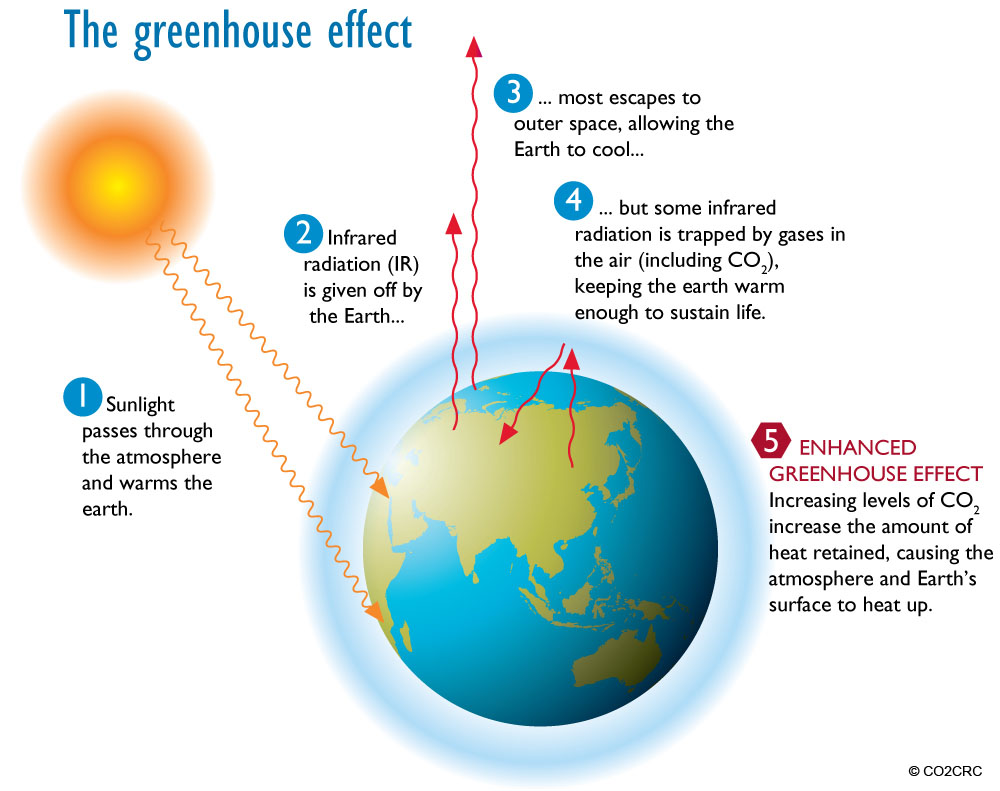> CO2 and Climate Change
Climate change - Greenhouse effects

Energy from the sun passes through the atmosphere to warm the Earth's surface. In turn, the land and oceans release infrared radiation or heat into the atmosphere, balancing the incoming energy. The blanket of gases covering the Earth traps some of this radiation while the rest continues out into space. This absorption of heat by the atmosphere maintains the Earth's surface temperature at a level necessary to support life as we know it. This natural process is called the greenhouse effect.
Without heat-trapping greenhouse gases that occur naturally in the atmosphere, the surface of the Earth would have an average temperature of about -18°C rather than our current average of about 15°C.
Human actions such as burning fossil fuels and land clearing are increasing the concentration of greenhouse gases in the atmosphere, resulting in more heat being trapped. This is called the enhanced greenhouse effect. The major consequence of this is an increase in temperature on the Earth's surface, resulting in climate changes and rising sea levels. Since the late 1800s, the average surface temperature across the globe has increased by 0.76°C. In the Arctic, average temperatures have increased at almost twice the average global rate over the past 100 years. Temperatures at the top of the permafrost layer in the Arctic have increased by up 3°C since the 1980s. With the rising temperatures globally have come changes to patterns of precipitation and winds and the frequency of severe weather events.
Source: Cooperative Research Centre for Greenhouse Gas Technologies (CO2CRC) in Australian
<< Previous page
---
Next page >>
TOP
|




